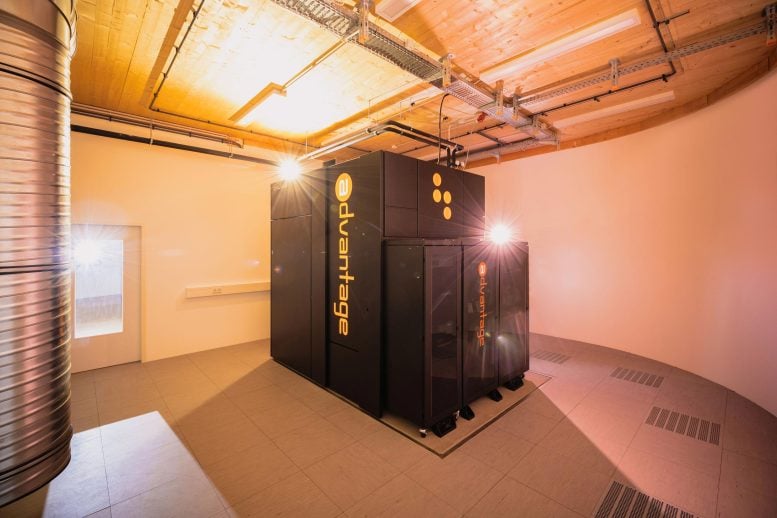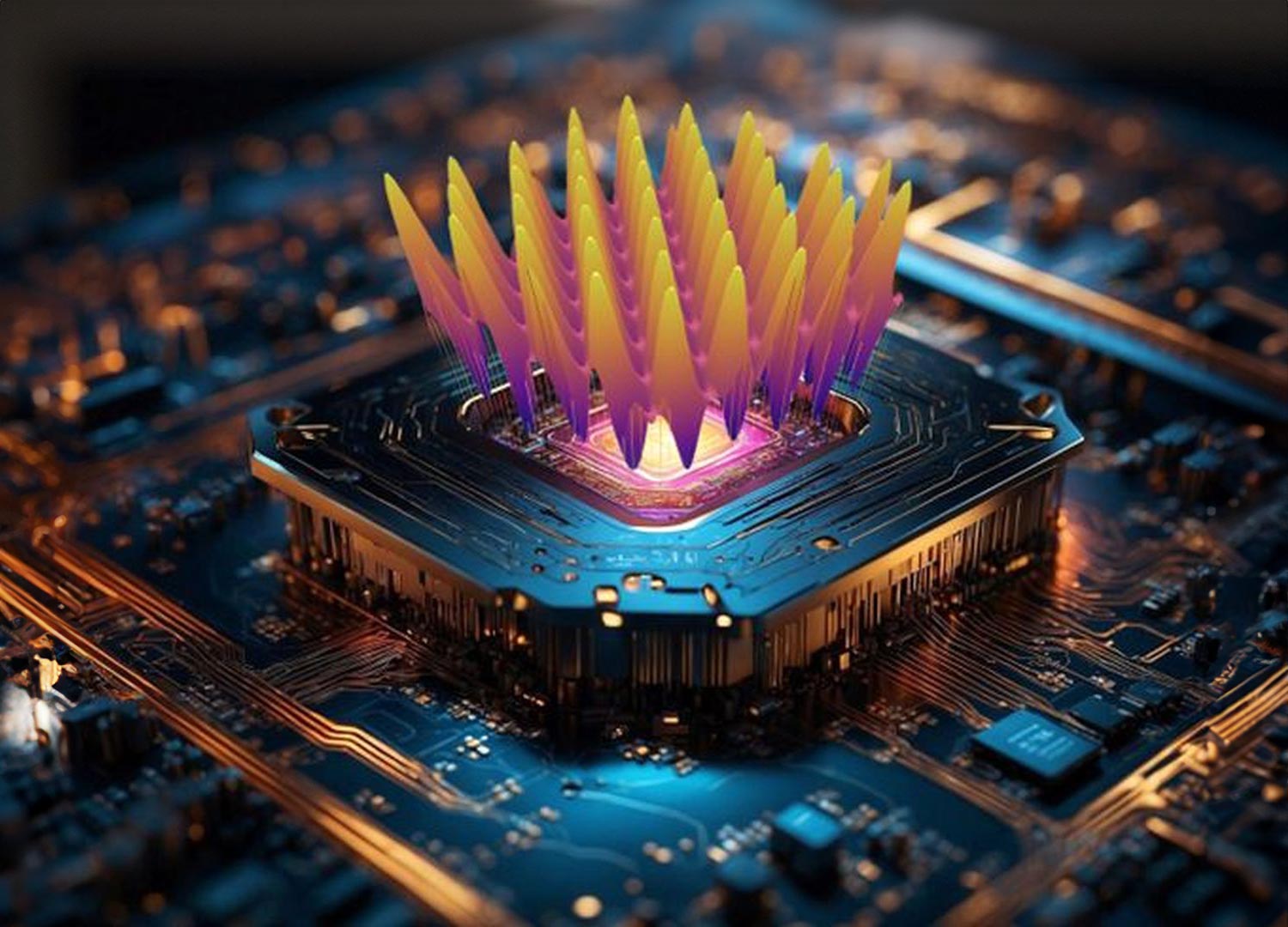Artistic rendition of a quantum simulation of 1T-TaS2 being performed on the quantum processing unit of a quantum annealer. Credit: Jozef Stefan Institute / Jaka Vodeb und Yevhenii Vaskivskyi, edited
Scientists have utilized a quantum annealer to simulate quantum materials effectively, marking a crucial development in applying 
D-Wave Quantum Annealer JUPSI at Forschungszentrum Jülich. Credit: Forschungszentrum Jülich / Sascha Kreklau
Challenges and Techniques in Quantum Material Research
“One challenge in researching quantum materials is to quantitatively measure and model the phase transitions of many-body systems,” explains Dragan Mihailović from the Jožef Stefan Institute in Slovenia. In this study, the scientists investigated the quantum material 1T-TaS2, which is used in a wide range of applications, including superconducting electronics and energy-efficient storage devices.
Jaka Vodeb from the Jülich Supercomputing Centre describes the approach: “We have placed the system in a non-equilibrium state and observed how the electrons in the solid-state lattice rearrange themselves after a non-equilibrium phase transition, both experimentally and through simulations.”
All calculations were conducted using the quantum annealer from the company D-Wave, which is integrated into the Jülich Unified Infrastructure for Quantum Computing, JUNIQ.
Advancing Quantum Technology and Efficiency
The researchers could successfully model the crossover from temperature-driven to noisy quantum fluctuation dominated dynamics. Furthermore, the scientists demonstrated that the quantum annealer’s qubit interconnections can directly mirror the microscopic interactions between electrons in a quantum material. Only one single parameter in the quantum annealer must be modified. The outcome aligns closely with the experimental findings.
However, the research also has practical applications. For instance, a deeper understanding of 1T-TaS2-based memory devices can lead to a practical quantum memory device, implemented directly on a quantum processing unit (QPU). Such devices can contribute to the development of energy-efficient electronic devices, thereby significantly reducing the energy consumption of computing systems.
Impact and Applications of Quantum Annealers
The research highlights the potential of quantum annealers in solving practical problems, paving the way for their broader application in various fields such as cryptography, material science, and complex system simulations. Moreover, the findings have direct implications for the development of energy-efficient quantum memory devices.
Reference: “Non-equilibrium quantum domain reconfiguration dynamics in a two-dimensional electronic crystal and a quantum annealer” by Jaka Vodeb, Michele Diego, Yevhenii Vaskivskyi, Leonard Logaric, Yaroslav Gerasimenko, Viktor Kabanov, Benjamin Lipovsek, Marko Topic and Dragan Mihailovic, 6 June 2024, DOI: 10.1038/s41467-024-49179-z




















Discussion about this post